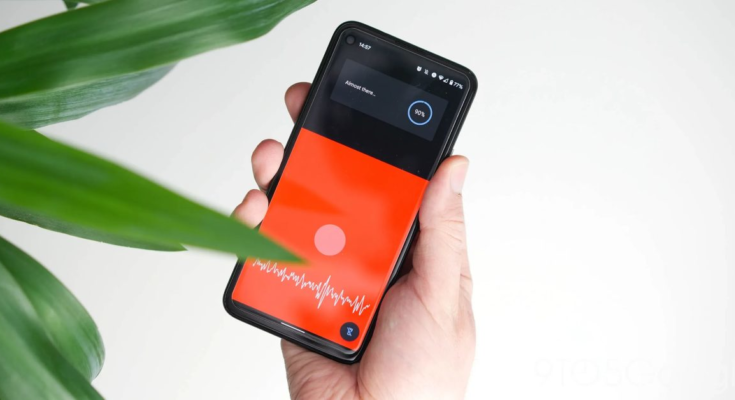At the start of this year, Google rolled out the ability to track key vitals directly on your Android device. Google Fit on iPhone has now quietly received the same ability to measure your heart and respiratory rate using just cameras.
Heart rate measurements start by placing your finger on the rear-facing camera lens and applying light pressure. There’s the option to turn on flash to increase accuracy in dark environments, or you can place your hand (and phone) in front of a light source.
Google is tracking the “subtle changes in the color of your fingers” to approximate blood flow, with the heart rate algorithms accounting for lighting, skin tone, age, and other factors. Additionally, it works offline with no internet connection required. This takes about 30 seconds with a preview graph and BPM noted at the bottom of the screen. Once complete, you can decide whether or not to save the vitals to Fit.


Meanwhile, the front-facing camera is leveraged to track the number of breaths you take per minute. Place your phone on a stable surface so that your head and upper torso is clear and unobstructed. Users are then guided through the process with prompts to “Hold still” for half a minute. Google Fit is calculating your respiratory rate from subtle chest movements, with computer vision tracking the tiny physical signals at a pixel level.
Back in February, Google announced this capability for Android phones. It started rolling out to Pixel phones a month later and other devices picked it up after that. We just noticed cards advertising the “Check your heart rate” and “Track your respiratory rate” in Google Fit’s Home feed on iOS. The Fit app was last updated in late November, but as of today, Google has yet to acknowledge the camera heart/respiratory capability for iPhone, even in support documents.
Measurements can also be initiated by going to the “Browse” tab > Vitals and scrolling down for the same prompts. Users can set-up alerts to be reminded to take measurements every so often. We’re seeing it on both iPhone (7) and iPad (Pro). (If you just installed and don’t find the cards, swipe away the Fit app from multitasking and reopen.)
The company does caution that “these results are not intended for medical purposes and should not be used to diagnose, treat, cure, or prevent any disease or medical condition,” but that these capabilities have gone through clinical studies.
FTC: We use income earning auto affiliate links. More.




